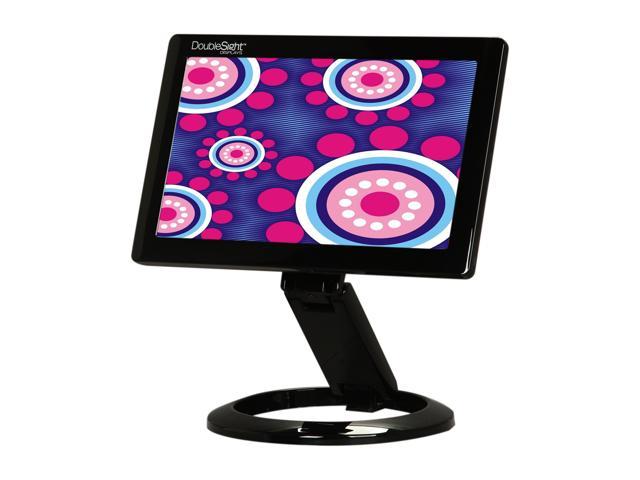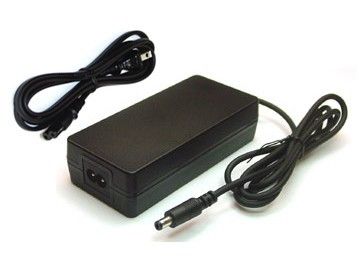- Doublesight Monitor Driver
- Doublesight Ds-70u Driver
- Doublesight Drivers
- Doublesight Ds-70u Driver
- Doublesight Display Driver

I recently bought myself a DoubleSight USB Monitor (specifically the 9” DS-90U), as I was getting tired of only using a single laptop screen when traveling.
Mac Driver High Sierra System Requirements OS Required. Sets up in like 15 seconds. Be doublesighf, keep it civil and stay on topic. The screen is a bit small compared to other travel-friendly USB monitors, however. DoubleSight DSU 9″ Widescreen LCD Monitor eBay.
As MS has proven, using a second monitor improves productivity – particular when software development is involved. Also, given that much of my communications with others occurs through channels that require my continuous partial peripheral attention (e.g., email, IM), I was constantly switching windows or managing screen real estate while trying to get work done.
Doublesight Monitor Driver
- DoubleSight DID-46KSKM. DoubleSight DS-1900S. DoubleSight DS-309W. DoubleSight DS-263N. Here you will find all DoubleSight manuals.
- Free drivers for DoubleSight DS-90U. Found 2 files for Windows, Mac OS X. Select driver to download.
- DOUBLESIGHT DS-265W DRIVER (doublesightds4480.zip) Download Now DOUBLESIGHT DS-265W DRIVER The DS-275W is a 27 inch 1900x1200 PVA monitor which would be good for more gaming if you aren't anal retentive like me, and also should be amazing for movies due to the great black level of S-PVA monitors.
I had been looking for a portable USB monitor for a while, considering both the DoubleSight and the Mimo models. I finally chose the DoubleSight for four reasons: 1) cheaper, 2) good reviews from “traveling” users, 3) 9” is more than 7”, and 4) I’m an Amazon Prime customer. However, you may find the Mimo is a better choice for you. I’m not aware of any other vendors of portable USB monitors.
I found the physical form factor and engineering is extremely well done. The monitor itself is solid and has a hard plastic cover. The foldable stand was also well-built and strong. Here’s a photo of how I set it up (to the right of my laptop screen.)
Using Windows 7, it’s a cinch to change the orientation and relative height of the monitor. I chose to stand the DoubleSight in Portrait style, as it’s about the same height as my laptop screen and takes up less horizontal space. As I use the screen for “side channel” applications (like Sametime), Portrait works fine for me.

I made sure to download and install the latest driver from the DoubleSight web site before plugging in the monitor for the first time. I’m not sure it mattered, but I figured I’d keep control over the driver install process.
Based on my experience with the monitor for the past couple of months, here are some tips for anyone getting a DoubleSight monitor:

- Don’t expect a high-speed monitor – the USB monitor uses the CPU and regular RAM, not the graphics chip. It’s not bad though, as Aero glass seems to work fine, even on my anemic old ThinkPad T60. I haven’t tried running video over the USB monitors yet (but have no need to.)
- Plug in the correct plug! The cable that comes with the monitor is a dual-plug USB cable, which enables folks with low-power USB ports on their PC to use 2 USB ports for power. My T60’s USB ports provide adequate power, so I only need to use one of the two plugs on the cable. However, I found that you must use the main plug (with two wires coming out of it), rather than the secondary plug. (See Pic). The first time I accidently plugged in the secondary (thin wire) plug, the DoubleSight’s power light was on/green, but the DoubleSight wasn’t working.
I spent about 10 minutes trying to figure out if the monitor was bad or if I had a driver problem. Neither, I just plugged in the wrong plug – the secondary plug only supplies power and does not provide a full USB connection. So if you find yourself wondering why the screen remained black after you plugged in the DoubleSight, it’s because you used the wrong plug.
I tried using a regular USB cable with a Mini-USB port, but it didn’t seem to provide the power correctly. In theory, a good Mini-B USB cable should do the trick; for now, I’m carrying around the “double cable” (a bit cumbersome.) - Secure the Attachment Knob for Travel – The stand folds up nicely, but the screw knob for securing the monitor to the stand could easily be lost when traveling, rendering the monitor less useful. Here’s the knob holding the monitor to the stand:
Although not foolproof, I used a set of velcro dots to secure the knob to the stand when it’s folded up. I used 3 velcro dots, rather than one, to make sure the knob stayed on as tightly as possible during travel. Unfortunately, the stand isn’t as compact with the knob velcroed to it, but that’s a small price to pay for making sure the knob stays around.
Here’s knob attached to the stand via velcro: - Be aware what happens when using a laptop – When I closed my laptop cover for the first time, Windows 7 cheerfully made my USB monitor the main “external” monitors. Not a problem, but a bit jarring the first time.
That’s all on that subject. Enjoy.
I recently bought myself a DoubleSight USB Monitor (specifically the 9” DS-90U), as I was getting tired of only using a single laptop screen when traveling.
As MS has proven, using a second monitor improves productivity – particular when software development is involved. Also, given that much of my communications with others occurs through channels that require my continuous partial peripheral attention (e.g., email, IM), I was constantly switching windows or managing screen real estate while trying to get work done.
I had been looking for a portable USB monitor for a while, considering both the DoubleSight and the Mimo models. I finally chose the DoubleSight for four reasons: 1) cheaper, 2) good reviews from “traveling” users, 3) 9” is more than 7”, and 4) I’m an Amazon Prime customer. However, you may find the Mimo is a better choice for you. I’m not aware of any other vendors of portable USB monitors.
I found the physical form factor and engineering is extremely well done. The monitor itself is solid and has a hard plastic cover. The foldable stand was also well-built and strong. Here’s a photo of how I set it up (to the right of my laptop screen.)
Doublesight Ds-70u Driver
Using Windows 7, it’s a cinch to change the orientation and relative height of the monitor. I chose to stand the DoubleSight in Portrait style, as it’s about the same height as my laptop screen and takes up less horizontal space. As I use the screen for “side channel” applications (like Sametime), Portrait works fine for me.
Doublesight Drivers
I made sure to download and install the latest driver from the DoubleSight web site before plugging in the monitor for the first time. I’m not sure it mattered, but I figured I’d keep control over the driver install process.
Based on my experience with the monitor for the past couple of months, here are some tips for anyone getting a DoubleSight monitor:
Doublesight Ds-70u Driver
- Don’t expect a high-speed monitor – the USB monitor uses the CPU and regular RAM, not the graphics chip. It’s not bad though, as Aero glass seems to work fine, even on my anemic old ThinkPad T60. I haven’t tried running video over the USB monitors yet (but have no need to.)
- Plug in the correct plug! The cable that comes with the monitor is a dual-plug USB cable, which enables folks with low-power USB ports on their PC to use 2 USB ports for power. My T60’s USB ports provide adequate power, so I only need to use one of the two plugs on the cable. However, I found that you must use the main plug (with two wires coming out of it), rather than the secondary plug. (See Pic). The first time I accidently plugged in the secondary (thin wire) plug, the DoubleSight’s power light was on/green, but the DoubleSight wasn’t working.
I spent about 10 minutes trying to figure out if the monitor was bad or if I had a driver problem. Neither, I just plugged in the wrong plug – the secondary plug only supplies power and does not provide a full USB connection. So if you find yourself wondering why the screen remained black after you plugged in the DoubleSight, it’s because you used the wrong plug.
I tried using a regular USB cable with a Mini-USB port, but it didn’t seem to provide the power correctly. In theory, a good Mini-B USB cable should do the trick; for now, I’m carrying around the “double cable” (a bit cumbersome.) - Secure the Attachment Knob for Travel – The stand folds up nicely, but the screw knob for securing the monitor to the stand could easily be lost when traveling, rendering the monitor less useful. Here’s the knob holding the monitor to the stand:
Although not foolproof, I used a set of velcro dots to secure the knob to the stand when it’s folded up. I used 3 velcro dots, rather than one, to make sure the knob stayed on as tightly as possible during travel. Unfortunately, the stand isn’t as compact with the knob velcroed to it, but that’s a small price to pay for making sure the knob stays around.
Here’s knob attached to the stand via velcro: - Be aware what happens when using a laptop – When I closed my laptop cover for the first time, Windows 7 cheerfully made my USB monitor the main “external” monitors. Not a problem, but a bit jarring the first time.
Doublesight Display Driver
That’s all on that subject. Enjoy.
